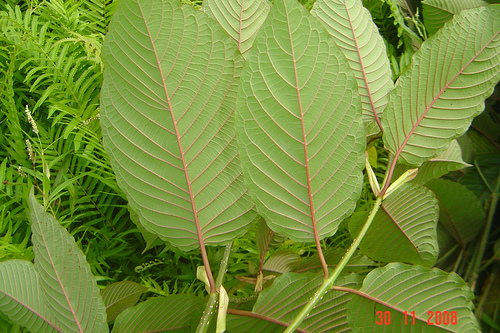How to make Salvia Tincture
How to Make Salvia Tincture: A Step-by-Step Guide
ALT: How to Make Salvia Tincture: A Step-by-Step Guide
How to Make Salvia Tincture
Firstly, what is salvia tincture?
Salvia Tincture is a Salvia-concentrate made from the Salvia divinorum plant. It contains Salvinorin A, an active ingredient found in the Salvia plant, otherwise known as Diviner’s Sage.
What are the Psychoactive compounds in Salvia Tincture?
It’s the Salvinorin A that enables the transpersonal experience that many people talk about when using Salvia.
How to produce the best salvia tincture: Enhancing quality with premium ingredients
Based on our years of experience, using high-quality materials and following instructions carefully are crucial to making a high-quality salvia tincture.
Beginners-Tip:
To make the best Salvia concentrate, plastic materials should be avoided as they can interfere with the tincture.
Ingredients needed to make Salvia Tincture
- 10 grams of powdered salvia extract (10x strength)
- 10 ounces of drinking alcohol (151-191 proof)
- 1 glass measuring cup
- 2 glass jars (such as a pickle jar) that can hold the 10-ounce tincture mix
- 2 large glass bowls or square pyrex dishes (for optional purity test)
- Small glass vials for portioning out your tincture (do not use plastic)
- 1 glass eyedropper (optional) with a rubber squeeze on the end (no plastic)
Optimizing the Salvia Tincture-Making Process through Effective Preparation Strategies
To prepare for the salvia tincture-making process, it is essential to follow some critical tips for optimal results.
First, avoid exposure to direct sunlight during the process, as this can affect the quality of the tincture.
Secondly, ensure that all tools and work areas are clean and contaminant-free.
Finally, as mentioned above, it’s crucial to avoid using plastic materials, as these can interfere with the salvia tincture.
By following these tips, you can help to ensure that your salvia tincture is of the highest quality and purity.
Making the Salvia Tincture step-by-step
Remember taking the time to properly make the salvia extract before moving on to the tincture-making process will ensure that the end product is of the highest quality. This should be your goal.
First Steps:
- Choose a glass jar appropriate for the amount of salvia extract powder you will be using.
- Pour the desired amount of drinking alcohol with a proof between 151-191 into the glass jar.
- Add the salvia extract powder to the glass jar containing the alcohol.
- Avoid using any metal or plastic materials when stirring, as this can ruin the mix (we use a bamboo fork).
- Gently swirl or shake the glass jar for 5 minutes to dissolve the salvia extract powder in the alcohol.
- Let the tincture sit for 5 more minutes after shaking or swirling.
- Check to ensure that everything is clear and completely dissolved.
- If the tincture is clear and completely dissolved, it is ready to use.
Pro Tip: If there is any material undissolved at the bottom of the jar, drain the clear tincture alcohol into a secondary glass jar, being sure to keep the unwanted sediment from transferring over.
Testing the purity of your Salvia Extract
To ensure the purity of your salvia extract, it’s recommended to perform a purity test using acetone.
- Dissolve your extract in 100ml of acetone in a glass bowl or pyrex dish
- stir for 5 minutes.
- If the mixture is clear, the extract is free of tannin and other impurities.
- If it’s cloudy, wait overnight and check for sediment.
- Any sediment means tannin was left during extraction, and the salvinorin A has not dissolved completely.
- Pour the acetone into another bowl, careful not to transfer any sediment.
- Evaporate the acetone and scrape the container for your salvia extract.
Although optional, performing this test can improve the quality of your salvia tincture.
What is the best method for storing your Salvia potion?
The ideal container for storing salvia tincture is a dark-colored glass bottle with a tight-fitting cap or dropper. Amber or cobalt blue glass bottles are great options as they offer additional protection from light.
Pro-tips:
- ensure that the container is clean and dry before use to avoid contamination.
- label the container with the date of preparation and the strength of the tincture.
How long can I store Salvia Tincture?
A well-made Salvia tincture appropriately stored in an airtight, opaque container can last for several years. However, it’s important to note that the tincture’s potency may gradually decrease over time.
What kind of alcohol should I use to make Salvia Tincture?
Generally, high-proof neutral grain alcohol, such as Everclear, is recommended for making Salvia tincture.
Can Salvia Tincture be made without using alcohol?
Yes, Salvia Tincture can be made without using alcohol. Many customers use alternative solvents such as vinegar, glycerin, or propylene glycol.
Just be aware that using alternative solvents may have a different potency or taste compared to an alcohol-based tincture.
Salvia Tincture (What you need to be aware of)
To ensure a safe and positive experience, it is crucial to understand the effects of Salvia Divinorum before using the tincture.
Salvia can have a strong and fast-acting effect on the mind and body, and it is crucial to be prepared for the experience. Some people may experience intense hallucinations or disorientation, while others may feel relaxed and calm.
It is also important to be aware of the potential risks and precautions before using Salvia, such as not driving or operating heavy machinery under the influence.
By educating yourself on the effects and taking necessary precautions, you can have a safe and enjoyable experience with Salvia tincture.

